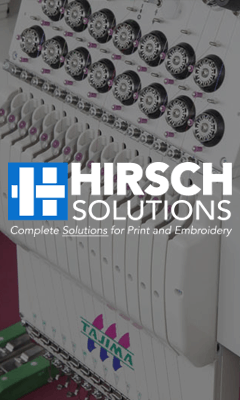Screen printing is an art form that requires precision, attention to detail, and a solid understanding of the fundamentals. Whether you’re a novice or a seasoned pro, there are common pitfalls that can derail your printing process. Here, we break down some of the most frequent mistakes in the screen room and how you can fix them.
1. Mesh Choice and Preparation
Choosing the right mesh is crucial for achieving the desired print quality. When selecting mesh, consider the lines per inch (LPI) or dots per inch (DPI) you aim to reproduce. For example, if you’re working with a 55 LPI screen, a 230 mesh is typically recommended. Lower mesh counts are suitable for solid prints, while higher counts are better for detailed designs.
Additionally, keep in mind that every mesh count also has different thread diameters. Thinner threads allow for better ink flow, which is essential for detailed prints. Remember, the goal is to choose a mesh that complements your design while ensuring the best possible ink transfer.
2. Proper Emulsion Use
Emulsion is another critical component in screen printing. The solids content in your emulsion should be between 35-50%. Cheaper emulsions often have lower solids, which means less stencil remains after the water evaporates. Always invest in high-quality emulsion to ensure durability and longevity of your prints.
When applying emulsion, be consistent with your coating technique. Always start by coating the substrate side and finish on the squeegee side to ensure the emulsion is correctly encapsulated. This method helps create a solid bond, ensuring your design transfers well onto the substrate.
3. Exposure Techniques
Exposure is where many printers falter. An underexposed screen can lead to issues during printing, and reclaiming an underexposed screen is a hassle. Ideally, you want your screen to feel the same on both sides after exposure—smooth and uniform. If one side feels slimy, you may be underexposed.
Use a 21-step exposure calculator to help determine your exposure times accurately. This tool can guide you in achieving the perfect exposure for your emulsion type and mesh count, ensuring consistent results.
4. Screen Drying Conditions
Humidity plays a significant role in the drying process. Ensure your drying area is kept at a lower humidity level (ideally between 30-50%). High humidity can cause emulsion to dry unevenly, leading to poor prints. Always dry screens substrate side down to allow gravity to assist in the drying process.
It’s also essential to avoid using fans directly on wet screens, as they can blow dust onto the mesh, causing pinholes and defects in your print.
5. Tension Control
Proper tension is vital for achieving crisp prints. Many printers overlook this aspect, but maintaining consistent tension across all screens is key. If you’re mixing mesh with different thread diameters, ensure they are tensioned similarly to avoid registration issues.
Check your screens regularly for tension levels. If you notice a drop, it’s time to replace or retighten them. A loose screen can lead to blurry prints and misalignment.
6. Coating Procedures
Follow a consistent coating procedure to avoid mistakes. Always coat the substrate side first, then the squeegee side. Be mindful of your speed; coating too quickly can introduce bubbles and lead to pinholes. Aim for about six inches per second for optimal results.
Using an automatic screen coater can help maintain consistency across multiple screens, reducing the chances of human error.
7. Cleaning and Maintenance
After each print run, clean your screens thoroughly. Old ink and debris can lead to contamination and poor print quality. Use a proper cleaning solution and ensure your screens are free of any residue before reusing them.
Regular maintenance of your equipment is also essential. Inspect all components before each print job to ensure everything is functioning correctly. This simple step can save you time and frustration in the long run.
8. Proofreading Designs
Finally, always proofread your designs before printing. Typos and misalignments can ruin an otherwise perfect print job. Have multiple sets of eyes review your artwork to catch any errors before they go to print.
Conclusion
By being mindful of these common screen printing mistakes, you can streamline your process and create high-quality prints every time. Remember, the key to successful screen printing lies in the details. Thanks to Dave Makin and Bill Smith of Saati for sharing their knowledge and expertise with us in this Shop Talk from Impressions Expo Atlantic City.


Comments